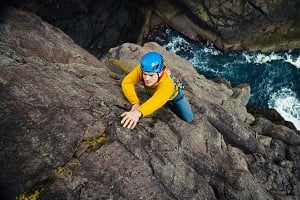
Ken Crocket writes about acclaimed Scottish climber and photographer Dave 'Cubby' Cuthbertson, the star in a new short film from conservation charity The John Muir Trust. The Trust's 'The Wild in Me' film series celebrates the connections between people and wild places. The first episode featured runner, climber and poet Helen Mort. In this second film, Cuthbertson talks about his deep affinity with John Muir Trust-managed Ben Nevis, and the role that mountains and climbing play in his life.
1971 now feels like a different era - which it was. Climbing had only just begun to acquire some technology in the way of alloy chockstones, but winter routes continued to be climbed with one axe cutting steps. Dachstein gloves ruled. As a hangover from earlier days, some climbers even tried their hand at aid climbing, particularly in winter when - in Scotland at least -rock was off season. This great route on Dumbarton Rock, I feel, demands some background history before it's forgotten.
And so on January 3rd I found myself at the foot of Dumbarton Rock's great wall. My leader was a hard rock man from Sheffield, Steve Belk. I was so impressed with Steve's climbing that I even named a route on Loudon Hill after him – to be fair he did make the first ascent. He was an engineer, which might explain why he succeeded in making what was the 2nd or 3rd ascent of Requiem. (The 1st was in 1965 by Brian Shields and Mike Connolly, at VS and A3; 2nd may have been by Shields again but unconfirmed.)
We took two days; Sunday 3rd was fun as we had two friends on the ground. Their task was to cheer us on and work Steve's wind up gramophone. This had two records. One was the Warsaw Concerto. As it was a cold and grey day, when we needed encouragement we asked for the other record, which was of Hawaiian tunes. At the end of day one we had placed a bolt belay and climbed part of the main pitch before we tied off the ropes and left for home.
On the Monday it became serious. Steve led the big pitch, and to this day I fail to understand how he managed the top crack on tied-off blade pegs. When I came to second, I had to stand on a step below the final bulge and knock out the last supporting peg. After the ascent and walking to the train station I found I had strained some chest muscle and could only support my sack by holding it in front of me.
And so to June 19th, 1974, when some primeval instinct worked on me and made me attempt a lead. Even though standards in rock, especially south of the border, were being raised, no one yet contemplated free climbing such rock, so it was by aid again. This time my lack of engineering knowledge, and overall incompetence at aid climbing were to lead to a different conclusion. I was about 25ft up the second pitch with seven pegs in. Stretching up from the top peg it came out from the vertical crack, followed in quick succession by the next five. The lowest peg was in a horizontal crack and so held for a blink or two, before I was airborne again, looking down to see the ground rise at an alarming rate. A friend watching this from below later remarked at the look of disgust on my face.
I landed in a patch of nettles, and looking around could not understand at first why my second was lying on the ground next to me, unconscious. For some unknown reason when I had fallen he had departed from the belay. I had pulled him off and we must have crossed paths in mid-air. To cut to the chase here, I ended up with a sprained ankle and some nettle rash, while my unfortunate second had his spleen removed later that day. That debacle marked the end of my playing at aid climbing.
Dumbarton Rock, for me the best bouldering ground in the country, gradually went from strength to strength. In 1975 I wrote the first outcrop guide which included the Rock. Many a good evening was spent there, watching salmon splash in the Leven where it entered the Clyde, with the sun setting and giving colour to the basalt rocks. The boulders and many of the wall climbs had of course been climbed, many by a small group of local climbers who became known as the Dumbarton Boys. Their names were also synonymous with a fair collection of great routes country wide. To climb the boulders intensively was akin to the final stage of honing an already sharp knife. At this time, from further east came the brilliant Neil MacNiven, sadly killed in the Alps in 1963, aged 21.
A few years later a new generation of climbers had appeared, many from Edinburgh. They seemed to be climbing at a uniformly higher grade. They were often refreshingly free of the baggage which accompanies higher education, and invariably had a low BMI. They easily outclimbed the baby boomers and appeared to lack their fear of falling. Given the better protection now available, this guaranteed that new routes at higher standards were inevitable. One of them was Dave 'Cubby' Cuthbertson. He was more approachable than some of his coterie, and soon spanned most of the spectrum of mountaineers, even joining the SMC in 1980. In 1983 he would author the SMC guide to Creag Dubh and Craig a' Barns. Cubby and his contemporaries were of the wave which followed Haston, Smith, Marshall and Spence and Porteous.
In his note on the climbing history for his guide Cubby writes of a new era in Scotland, spanning 1976-1982. The face climbs at Dumbarton had been pioneered by MacNiven, Shields and Connolly, along with the boulders, and it may be worth mentioning that many of the boulder routes could be and were led in big boots, especially by Shields. Cubby points out the Edinburgh climber Murray Hamilton as being prominent in this period.
With most of the routes freed at Dumbarton which had originally needed some aid, attention naturally turned to the big wall, and in particular Requiem. In 1980 Cubby free climbed Chemin de Fer (E5 6a), one of the best crack lines in Scotland, left of the looming Requiem. It was almost inevitable that next he would set his eyes on this problem.
The summer of 1983 was one of record temperatures, with a July peak in Glasgow of 30.1°C. Allied with high humidity, this could easily make many hard ascents impossible. As it was, it took Cubby six weeks of superhuman effort involving multiple falls before the climb fell at a grade of E7 6c. With subsequent ascents it has now settled at E8 6b. In 1983, it was almost certainly the hardest route in Scotland. Legend records that immediately following the successful ascent, Cubby rushed down to the beach, stripping off his clothes as he ran, to plunge into the water for a cooling swim.
The very brief description of the route appeared in the 1984 SMC Journal as follows:
DUMBARTON ROCK – Requiem 27m, E7
D. Cuthbertson (unseconded). 6th July, 1983.
Now free, providing a superb, strenuous and super-sustained
pitch, the last move being the crux, (6c). Sieged over several weeks.
The reference to humidity above is of paramount importance when climbing on rock as smooth as the basalt of Dumbarton. Too humid and finger moisture robs the climber of the required friction, even when using chalk.
As for Cubby in person, one of his most likeable traits was his modesty. He was never bombastic regarding his numerous triumphs on rock and ice. And as night follows day, he was also highly proficient on ice. Work on television series and more guidebook work would follow. He was one of my fellow authors on an updated guidebook to Glen Coe, with his knowledge of the higher grade routes highly valued. Cubby took up photography as a natural extension to his mountain climbing, and for some years produced a highly popular calendar. His illustrations grace many a climbing publication.
It has been one of the pleasures connected with mountaineering to have met Cubby and followed his career from a safe distance. His contributions to this dance on rock and ice will endure far into the future and give much pleasure to those who follow.

More information on the John Muir Trust website.


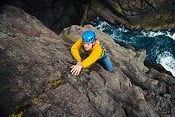
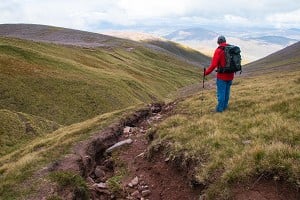
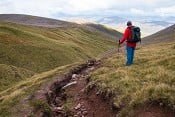
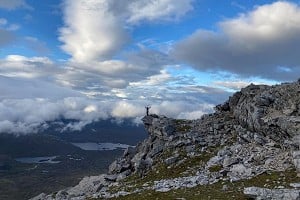
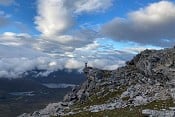






Comments
1983 was obviously a pretty special year, with Cubby doing Stormy Petrel a few months before Requiem. Could do with a winter and summer like that -:)
"To cut to the chase here, I ended up with a sprained ankle and some nettle rash, while my unfortunate second had his spleen removed later that day. "
I just snorted tea all over the desk!